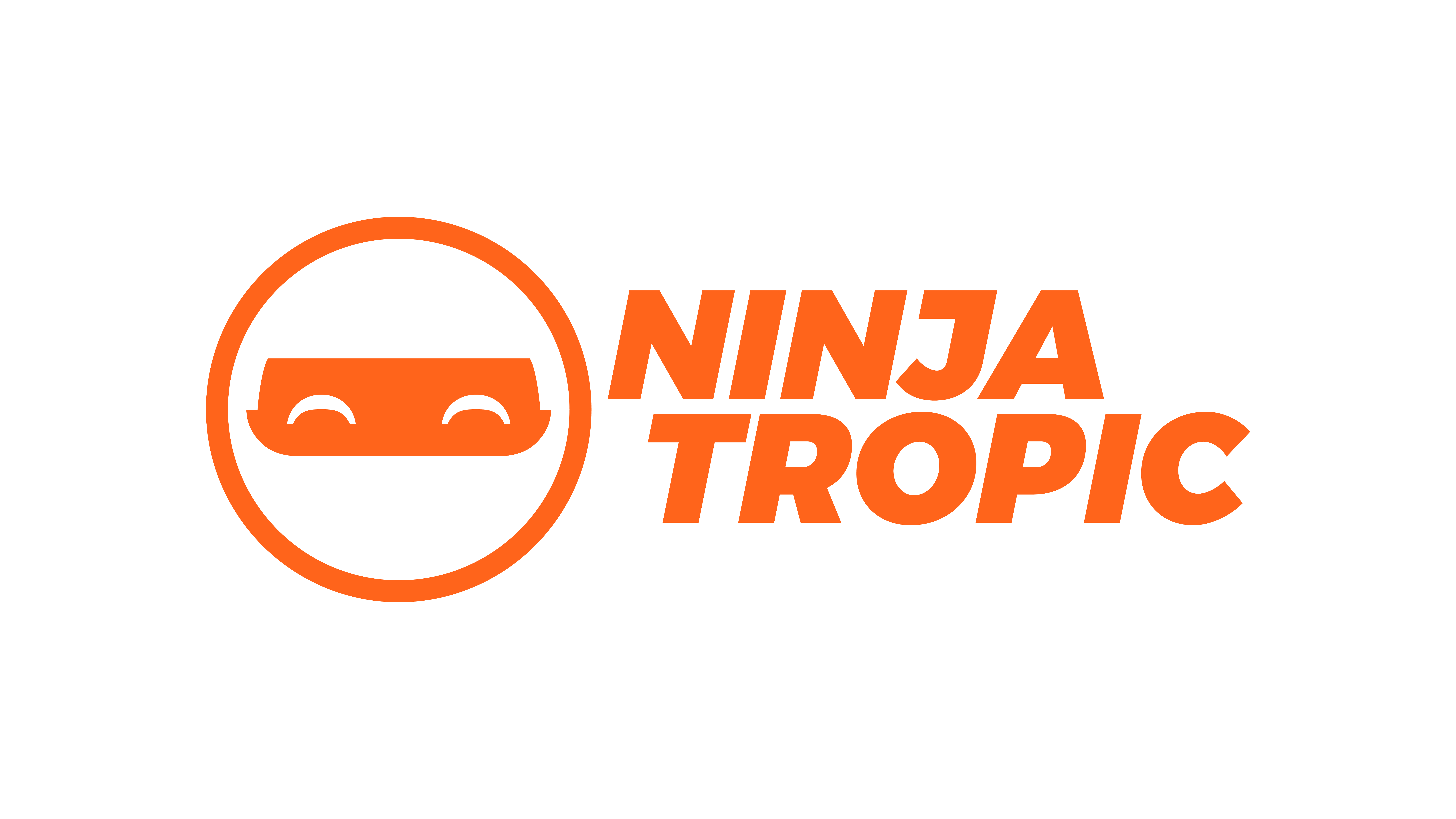This article is written in collaboration with Ninja Tropic and eLearn Magazine.
To get the importance of LMS content, picture this: You implemented your Learning Management System (LMS) to roaring success. You laid the ground for a beautiful, sturdy track. The layout optimizes growth and nutrient delivery. The weather is ideal. The environment is safe, no obstacles on sight.
Then, you kick off your content engine. Against better judgement, in this perfect environment the machines that will take your students across the airs are… not great. Some look outright feeble. Most of them might take your students to their destination through some noise and turbulence. In others, the best case scenario could be that your passengers decide not to board.
As a result, the learning experience is subpar.
This is what happens when content becomes an afterthought in LMS implementation.
Fear not. Whether you’re refactoring, co-creating, repurposing or building content from scratch, you can succeed. Your content can be a fertile educational ground. All you have to do is make the most of your modern-featured LMS.
Follow this article and let’s dive into a much more fortunate story. In here you will learn the basics of content in your LMS. We’ll suggest a flexible process, common pitfalls and ways to address it. By the end, you’ll find advice from educational content experts.
It is time you perfect the skill of LMS content delivery. Let’s get started!
First things first: Audit your existing LMS content delivery
Do you remember how important educational content is? What are its expected outcomes, and what does the learning experience look like? Above all, do you remember your audience, who you’re interacting with, and the goal of your content?
It’s easy to lose sight of the higher end when you’re juggling tasks. If you’re like most educators, there’s little time left in your schedule to take a step back. And if you’re in charge of educational content, chances are some have been wandering in your LMS. Outdated, aimless.
Action #1: Make an inventory of all the content pieces you are currently responsible for
In the same way you get an LMS update with a certain frequency, so should you schedule a content update. It might be a good idea to associate both in time. In “major” updates, modern LMS provide new features and capabilities. Your LMS provider may also bring new functionality from a partner. They can increase affordances, both for general and specific subjects.
Action #2: Perform a content LMS SWOT
As you make review and update a habit, identifying your Strengths will become easier. What makes your content strong, and your content skills top notch? The answer is what your learners should associate with you, through your content.
It might not be the best word, but focusing on your Weaknesses is the other half of making your content stand out. We prefer to call them “skills yet to practice.” Or even better, focus on things to fix, and fix them. Make sure you update your process to prevent this error from happening again in the future.
Now, if you synced your review with your LMS release schedule, Opportunity awaits! Look into the documentation, or ask your account rep for new features worth trying out. There is usually a couple of trade-offs to account for: time, money or other resources. Experienced educators often develop a sense of the ROI of Learning of a new feature or tool in a short time.
Finally, round the analysis by identifying Threats. These are practical or technological factors that may affect your content delivery. Some are more foressable than others. Software updates and end-of-lifes (EOLs) are inevitable things that you can plan for. For more unknowable unknowns, manage your risk by diversifying. Don’t rely on single features or technologies, and keep your content in many file formats.
Remember: Your educational content has a multiplier effect. This is even truer for evergreen content. (This is work you make that transcends time, which should be as much if not all your work!) So every bit of time you spend refining your content will have a positive ripple effect.
Migrating content to a new LMS
When transitioning to a new Learning Management System (LMS), organizations frequently encounter the challenge of content migration. This critical phase, often overlooked, involves transferring existing learning materials to the new platform. A well-thought-out plan is essential to ensure that content is not only moved efficiently but also remains accessible, updated, and compatible with the new system.
Action #3: Plan for LMS-content integration
Underestimating this preparatory stage, which precedes the sales cycle, can lead to significant oversights. To avoid this pitfall, it’s important to engage in thorough planning by asking key questions:
- Content and Platform Management: Do you have all the necessary elements to effectively manage an LMS? This includes access to original content source files, a dedicated individual or team to oversee the LMS operations, and any specific branding elements that need to be incorporated.
- Resource Assessment and Acquisition: Evaluate the resources at your disposal. Determine if there’s a need to bring in additional expertise, such as a project manager, an IT consultant, or an LMS administrator. Assessing your current resources will guide you in making informed decisions about hiring or reallocating personnel for effective LMS management.
- Content Evaluation and Strategy: Are you aware of the content currently in your possession? Deciding what to migrate to your new LMS, and what to archive, requires a careful assessment of your existing materials. This step ensures that only relevant and necessary content is transferred, enhancing the efficiency of the migration process.
- Data Management: Consider the state of your current data. Is it organized and ready for a smooth transition? Identifying who will be responsible for collating, organizing, and transferring data and content is crucial. This clarity will streamline the migration process, ensuring your new LMS is populated with accurate and well-structured information.
Addressing these considerations early in the process of LMS implementation sets a solid foundation for a successful transition. By focusing on these aspects, you can ensure that your new LMS is not only a technological upgrade but also a tool that effectively meets your organizational learning needs.
Strategies for Content Revitalization
Once you’ve assessed your existing content, the next step is to inject new life into it. This could involve curating or creating new materials to fill gaps and leveraging modern instructional approaches like microlearning and interactive modules. The aim is to transform your LMS into a vibrant, engaging learning environment.
Action #4: Pilot new content-LMS integrations (with real people)
With new or refreshed content ready, focus shifts to implementing your new LMS. This isn’t just a technical deployment but also an opportunity for organizational change. Ensure smooth integration with existing systems and engage stakeholders throughout the process. Provide comprehensive training to both learners and administrators, highlighting the features and functionalities of the new system. Remember, an LMS is only as effective as the people using it.
A meticulously crafted implementation plan for a Learning Management System (LMS) prioritizes the perspectives and preferences of its end users. This focus significantly enhances the likelihood of successful user adoption and active engagement. When users encounter an LMS that is intuitive, user-friendly, and tailored to meet their specific learning objectives, their inclination to utilize the system effectively is greatly amplified.
Recognizing the critical nature of this user-centric approach, it is strongly advised to incorporate a Pilot stage within your implementation strategy. This phase involves selecting a diverse group of employees who can interact with the LMS in a controlled environment. Their firsthand experience with the system is invaluable, providing insights that cannot be gleaned from theoretical planning alone.
During this Pilot stage, it’s essential to gather comprehensive feedback from these pre-selected users. Employ methods such as surveys or facilitated group discussions to delve into their experiences. Key areas of focus should include the overall user experience, the functionality and relevance of features, and the efficiency of the course creation process for authors.
This feedback presents a golden opportunity to fine-tune the LMS. Addressing concerns and making improvements based on actual user experiences and suggestions is crucial. This process not only enhances the system’s usability but also demonstrates a commitment to meeting the needs of your employees.
By taking these careful and considerate steps, you can significantly smoothen the transition during the actual launch phase. When your LMS is molded by the voices and needs of its users, it stands a much better chance of being embraced and effectively utilized across your organization.
Taking it further
Action #5: Consolidate an administrative and management style
Effective LMS administration is the backbone of a successful learning platform. Develop Standard Operating Procedures (SOPs) that cover content management, user support, and data analysis. Assemble a skilled team, proficient in both LMS management and instructional design. Regularly update your SOPs based on user feedback and evolving learning needs. This proactive approach ensures your LMS remains a relevant and effective tool for learning and development.
By establishing a monitoring plan during the period of an LMS implementation, organizations can proactively address issues, optimize the user experience, and lay the foundation for successful long-term utilization of the learning platform. This iterative process of monitoring, analyzing, and refining is essential for continuous improvement and the ongoing success of the LMS.
Transforming the LMS administrator role from operational to strategic is vital. It involves a shift from routine administrative tasks to a more strategic and holistic approach to managing the learning environment. This role should align closely with the organization’s educational and business objectives and Administrators need to move beyond just managing content to become strategic partners in the learning process. By focusing on aspects such as Data Analytics and Integration, you will not only develop and implement reporting mechanisms that provide insights into learner progress, engagement, and course effectiveness for better data-driven decision-making, but also continually explore opportunities for integrating the LMS with systems, such as HR software or performance management tools to enhance its uptime and UX.
To Sum Up
Implementing a new LMS in the presence of outdated content is a challenge, but it’s also an opportunity to redefine your educational strategy. By refreshing your content, ensuring smooth technological integration, and establishing effective LMS administration, you create a dynamic learning environment. This approach not only enhances the immediate learning experience but also sets the stage for ongoing growth and development. As you embark on this journey, remember that the goal is to create an LMS that not only functions efficiently but also resonates with and inspires your learners.
To successfully navigate this transition, organizations should prioritize training and development for their LMS administrators, integrate them into strategic planning, and continuously evaluate and update their learning content. By taking these steps, you ensure that your LMS is a strategic asset, driving both educational excellence and organizational growth.

Written by Erick Prospero, CEO & Diana Amaral, Senior LMS Manager at Ninja Tropic. Erick is a renowned thought leader in the microlearning and corporate training space. Diana is an experienced LMS admin and project manager, knowledgeable in delivering highly engaging training in over a dozen different LMS. Learn more about what Ninja Tropic can do for you







